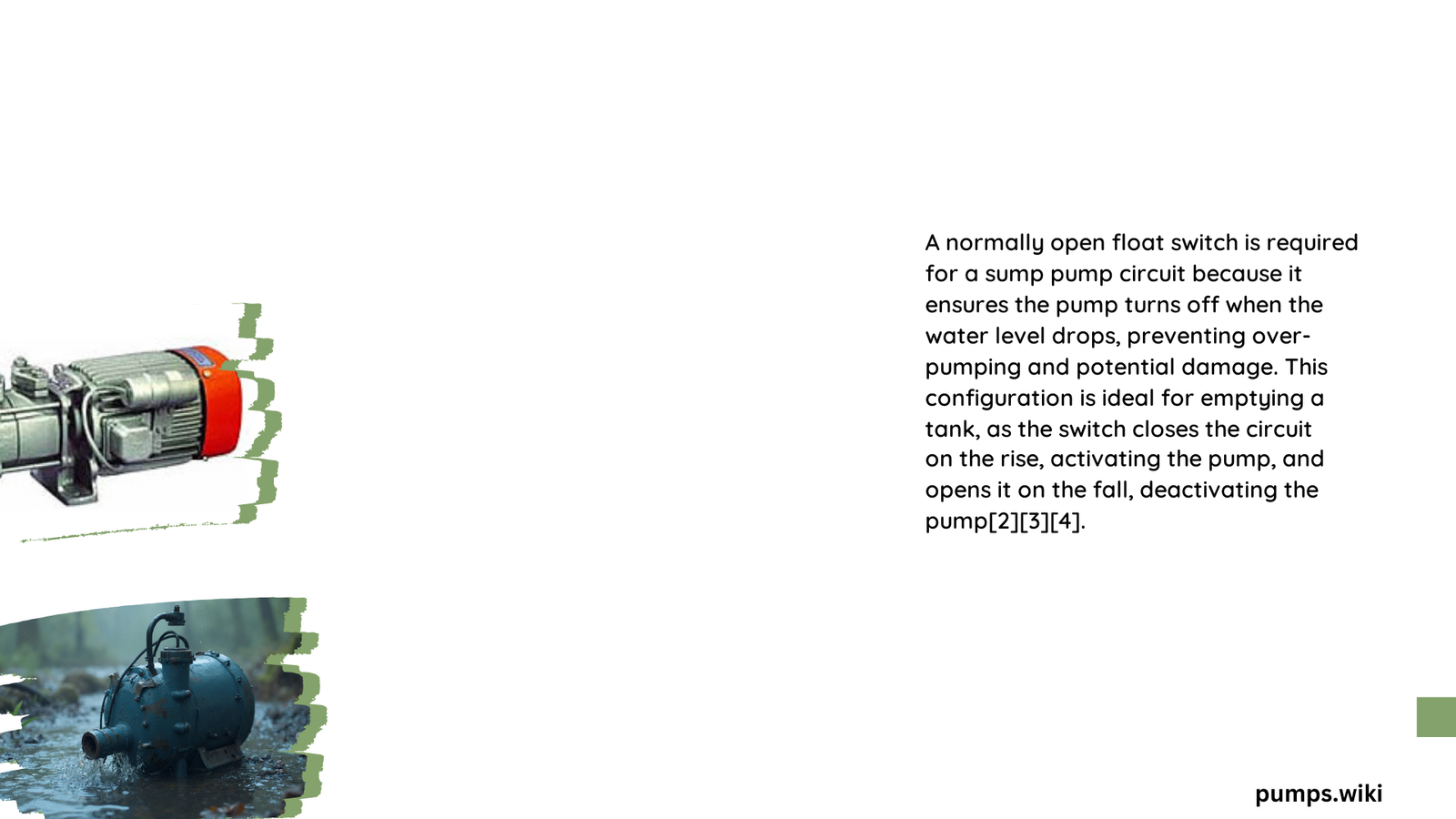A normally open float switch is a critical component in sump pump circuits, providing essential water level control and pump activation mechanisms. This specialized electrical switch ensures automatic pump operation by detecting water levels, preventing basement flooding, and protecting your property from potential water damage. Understanding its precise wiring, installation, and functionality is crucial for homeowners and professionals seeking reliable water management solutions.
What Makes a Normally Open Float Switch Essential for Sump Pump Circuits?
Why Do Sump Pump Circuits Require Specific Float Switch Configurations?
Sump pump circuits demand precise electrical control mechanisms to manage water removal effectively. A normally open float switch serves as a critical interface between water levels and pump activation, offering several key advantages:
- Automatic Water Level Detection: Triggers pump operation when water reaches a predetermined height
- Electrical Safety: Provides controlled switching mechanism
- Reliability: Ensures consistent pump performance under varying water conditions
Key Float Switch Characteristics
| Feature | Description | Importance |
|---|---|---|
| Switch Type | Normally Open | Allows direct electrical control |
| Activation Method | Water Level Rise | Automatic pump engagement |
| Electrical Rating | Typically 115V | Compatible with standard residential circuits |
How Does a Normally Open Float Switch Operate in a Sump Pump System?
The float switch functions through a simple yet effective mechanical principle. As water levels rise, the float ascends, closing the electrical circuit and activating the pump. When water recedes, the float drops, breaking the circuit and stopping pump operation.
Critical Wiring Components
- Hot Wire Connection
- Typically black or red
- Carries power from electrical panel
-
Connects through float switch mechanism
-
Neutral Wire Connection
- Usually white
- Completes electrical circuit
-
Connects directly to pump neutral wire
-
Ground Wire Connection
- Green or bare copper
- Provides electrical safety
- Connects to system ground
What Are the Specific Installation Requirements?
Necessary Tools for Float Switch Installation
- Wire strippers
- Electrical connectors
- Multimeter
- Cable ties
- Mounting hardware
Step-by-Step Installation Process
- Mounting Considerations
- Select appropriate height for water level detection
- Ensure unobstructed float movement
-
Use cable weights if required
-
Electrical Connections
- Verify wire gauge compatibility
- Secure all electrical connections
-
Use proper wire nuts and electrical tape
-
Circuit Testing
- Perform continuity tests
- Verify pump activation at correct water levels
- Check ground connections
What Troubleshooting Techniques Ensure Optimal Performance?
Common Float Switch Failure Indicators
- Pump not activating
- Continuous pump operation
- Intermittent switching
- Physical switch damage
Diagnostic Steps
- Visual inspection of switch and wiring
- Continuity testing
- Electrical connection verification
- Replacement assessment
What Safety Precautions Should Be Considered?
- Follow National Electrical Code (NEC) standards
- Use proper wire gauges
- Ensure secure grounding
- Regular maintenance and inspection
Conclusion

A normally open float switch represents a sophisticated yet straightforward solution for managing sump pump circuits. By understanding its operational principles, installation requirements, and maintenance needs, homeowners can ensure reliable water management and protect their properties from potential water damage.
Reference:
- [Rainwater Equipment Float Switch Wiring Guide]
- [Sump Alarm Technical Documentation]
- [National Electrical Code Standards]
